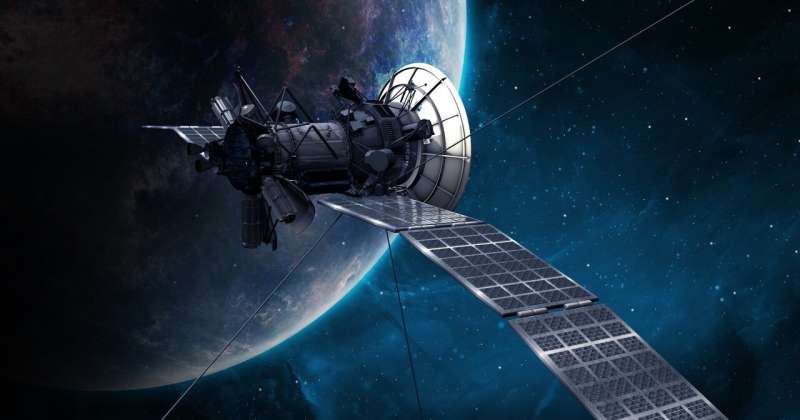
Recent research led by scientists at the University of Technology Sydney has demonstrated that it is feasible to transmit quantum signals from Earth to satellites. This breakthrough could significantly enhance quantum communication networks and was detailed in a study titled “Quantum entanglement distribution via uplink satellite channels,” published in the journal Physical Review Research.
Traditionally, quantum satellites have been utilized to send entangled particles of light, or photons, from space down to ground stations, primarily for secure communications. However, the new findings reveal that the reverse process—sending quantum signals upward from Earth—can also be achieved, overcoming obstacles that once made it seem impossible.
The research team, including prominent figures like Professor Simon Devitt and Professor Alexander Solntsev, found that ground station transmitters can access greater power, are easier to maintain, and can generate stronger signals than previously thought. This advancement opens up possibilities for future quantum computer networks utilizing satellite relays.
The concept of using uplink signals had been dismissed due to concerns about signal loss, interference, and scattering. “Current quantum satellites create entangled pairs in space and then send each half of the pair down to two locations on Earth—called a ‘downlink,'” explained Professor Solntsev. He noted that while downlink methods mainly serve cryptographic purposes, the uplink approach had not been taken seriously until now.
The researchers aimed to explore whether it was possible to send photons from two separate ground stations to a satellite orbiting approximately 500 km above Earth, traveling at about 20,000 km/h. Surprisingly, their models indicated that uplink transmission is indeed feasible, accounting for real-world factors such as atmospheric effects and background light from Earth and the moon.
The implications of this research are significant. The team suggests that the uplink concept could be tested soon using drones or balloon-mounted receivers. This could lay the groundwork for a broad quantum network spanning countries and continents, facilitated by low-orbit satellites.
In discussing the potential of a quantum internet, Professor Devitt said, “A quantum internet is a very different beast from current nascent cryptographic applications. It’s the same primary mechanism but you need significantly more photons—more bandwidth—to connect quantum computers.” The uplink method could provide that necessary bandwidth without requiring extensive quantum hardware onboard satellites.
This innovative approach reduces costs and size, making it a practical solution for future applications. Looking ahead, Professor Devitt envisions a future where quantum entanglement becomes as commonplace as electricity, seamlessly integrated into various devices.
The collaboration between the Faculty of Engineering and IT and the Faculty of Science at the University of Technology Sydney showcases the institution’s commitment to addressing major technological challenges through interdisciplinary efforts.
The study underscores the potential for uplink quantum communications to transform information technology and secure communications on a global scale. As researchers continue to explore this frontier, the dream of a functional quantum internet becomes increasingly tangible.
For further details, refer to the study titled “Quantum entanglement distribution via uplink satellite channels” in Physical Review Research (2025).







